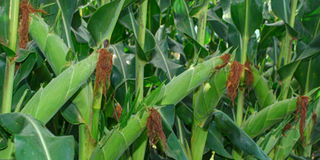How farmers can fight counterfeits

Good seeds will give you the best harvest. File photo
What you need to know:
- The areas where the models are going to work include, Dokolo, Kamwenge, Bugiri, Kamuli, Lira, Gulu, Isingiro, Mityana, Luwero, among others.
- The seed sector has for long been plagued by counterfeit seeds and chemicals which has hampered access to better, higher-yielding and wide-ranging varieties for farmers, writes Christine Katende.
The seed sector has for long been plagued by counterfeit seeds and chemicals which has hampered access to better, higher-yielding and wide-ranging varieties for farmers, writes Christine Katende.
Every year, Ugandan farmers struggle to increase agricultural production because of procurement of fake seeds that flood the market. It is estimated that up to between 30 and 40 per cent of the seeds on the Ugandan market are counterfeit.
This, coupled with the weather vagaries takes toll on Ugandan agricultural sector that employs the biggest percentage of the population in the country.
High costs of genuine seeds
The problem is exacerbated by high costs of genuine seeds, unavailability of genuine seeds on the local markets and farmers’ lack of awareness on how to identify fake seeds from the genuine ones.
Farmers in the process lose millions of shillings.
New models
However, to stop these losses, new models for identifying genuine seeds are continuously being developed to help the farmers.
Andrew Okiror, an agribusiness expert working with Sasakawa Global 2000 (SG2000) in Ethiopia, revealed that the organisation has introduced models, where commodity association trainers are selected and comprehensively trained on the different techniques of identifying a counterfeit so that they can help farmers at different levels.
Kakasa system
In conjunction with the agriculture ministry to help the farmers, Okiror said they have also introduced “kakasa,” another method farmers are currently using to help them identify counterfeits.
“Every input package has a scratch number, which a farmer enters in his or her phone, if it sends a YES message, then the farmer will definitely know that it is a genuine product but in the event of no reply, it means that the seeds are a counterfeit,” Okiror said.
Kakasa, a mobile phone-powered e-verification programme that detects fake inputs in the market was launched in 2016.
How Kakasa benefits farmers:
This system of verification ensures a number of things:
• That the seed or pesticide product is from an approved supplier.
• It prevents buyers from purchasing fake or adulterated products.
• Prevents re-use of packs filled with diluted contents.
• Provides evidence for users to take to the relevant authorities.
Pilot districts
The areas where the models are going to work include, Dokolo, Kamwenge, Bugiri, Kamuli, Lira, Gulu, Isingiro, Mityana, Luwero, among others.
The models
The models include: The commodity association traders’ model, farmers’ learning platform (where farmers are taught about the best practices in agricultural production), climate smart agricultural model (where practices are implemented and those that mitigate climate change are promoted).
Others are: The commodity seed multiplication model (this is to curb the challenge of small holder farmers accessing quality seeds), the private service provider model (where the focus will be put on identifying the business people that can provide services such as spraying services and post-harvest handling).
There is also the village saving and loan association model, where farmer groups save money and are able to access loans.
The post-harvest enterprise model and the one-stop centre association model are also on board.




